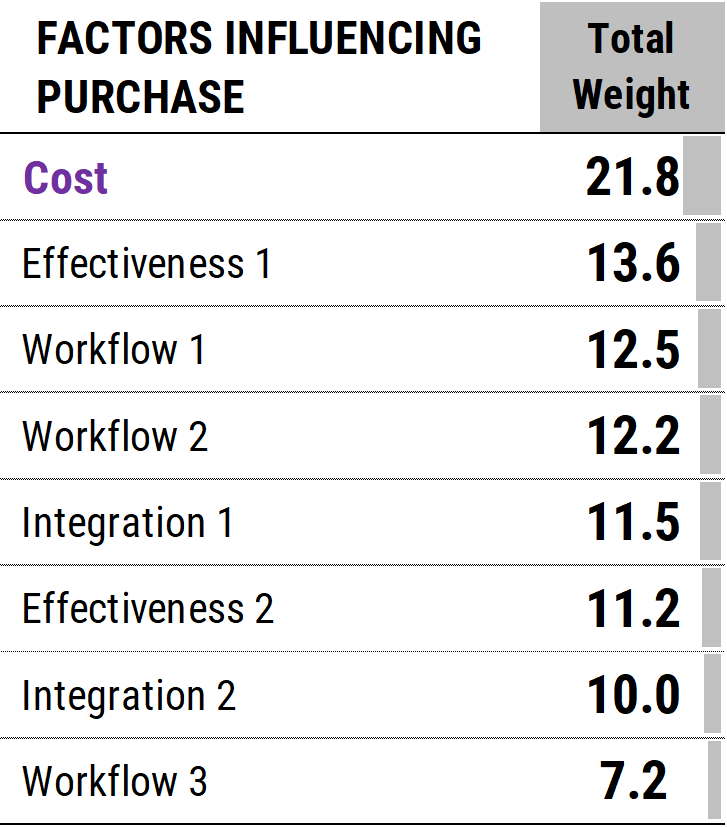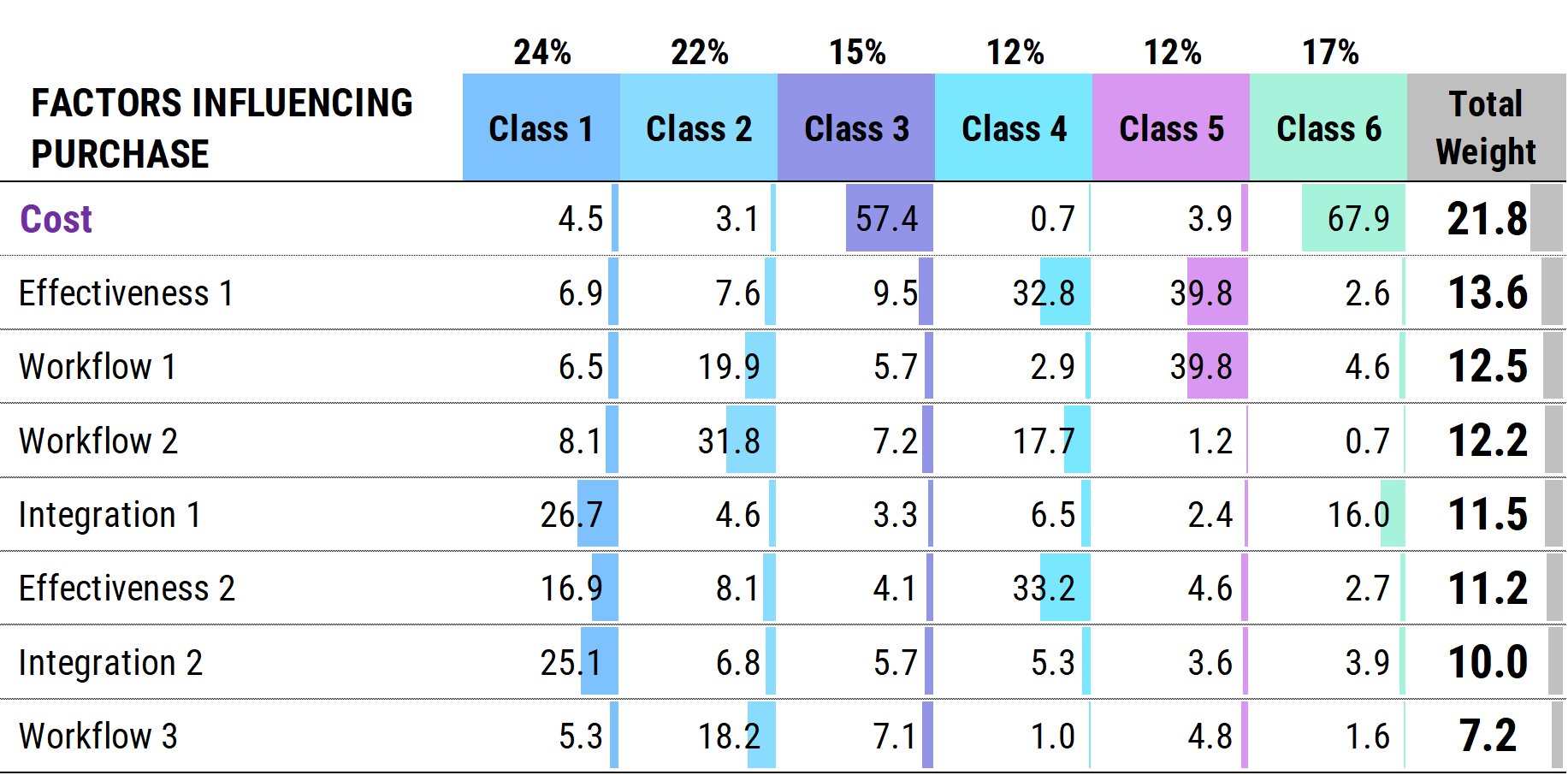Exploring Cost Sensitivity With Latent Classes
Cost Always Matters
Of course it does… right?
Sometimes digging one or two layers below the surface can help us understand why cost matters, and to which customers.
These are precisely the kind of questions that latent class analysis can help us understand.
The Situation
In this case we’re examining what factors matter when choosing a new technology in the acute care hospital setting. Of course this example is heavily blinded, but the underlying data are real and come from a diverse set of institutional decision makers, all of whom are current or potential customers for this product category.

The research for this example was conducted with Apical Research Team.
See “About EFI” for more about this partnership.
The research technique for this example was MaxDiff (“best-worst”) but the theme is independent of the analytic approach. Any time we assign importances or factor weights to different motivators or product features, this approach is relevant.
Overall Importance of Cost

Looking at this tells us what we already stipulated: Cost matters. In fact, for this technology, cost appears to matter more than anything else and by a large margin.
The remaining factors have been labeled with broad thematic categories for purposes of this blinded example. For the most part importance is tightly grouped, with the exception of “Workflow 3” which doesn’t matter nearly as much.
(There are lots of ways to “explode” the apparently tight importance grouping of the factors in the middle, but for now that isn’t what we’re focusing on.)
What we’d really like to know is why cost matters so much, and to which customers. There’s more than one way to do this. (For instance, we could estimate individual factor weights and model them against other respondent characteristics.) But sometimes a simple approach is best. Let’s take a look.
Latent Class Analysis

This helps a lot!
A simple Latent Class Analysis has revealed a very clear and natural segmentation in our respondent base, particularly when it comes to cost. Our classes are well distinguished with obvious and generally consistent preference patterns.
Class 4 is dominated by the two effectiveness parameters, and Class 2 cares most about workflow. Class 1 is concerned with integration. (Class 5 is concerned with a single effectiveness and a single workflow parameter, which happen to be related in this example.)
That leaves Class 3 and Class 6 which are dominated by, you guessed it, cost. Together these classes constitute about one-third of our sample, and there isn’t a lot to distinguish them from one another in terms of preference patterns in these data.
What’s interesting is the near absence of cost as a material factor for the other classes. So rather than being the single most important factor, as suggested by the overall factor analysis, cost actually only matters to about one-third of our audience – but when it matters, it is more important than anything else!
This finding alone is critical because it tells us not to market “around” cost. For these customers, nothing else is likely to matter.
What Do We Do With This?
Now that we know cost only matters to some customers, we can start to focus on the original questions: who are these customers and why does cost matter so much to them?
Class membership analysis can help solve these problems. In this example, it turns out that the customers who care about cost – the ones in Classes 3 and 6 – tend to share certain characteristics. Depending on what we know about them, we can construct profiles to help us identify them in advance. We can also explore the relationships between other attitudes or preferences and cost sensitivity for this technology, giving us insight into why.
The key is that we’ve gone beyond a general statement of “cost matters” and moved on to a structured analysis of why, and to which customers, taking us down an analytic path with tangible implications for market and customer segmentation.
